AMD’s GTX 560 Ti Counter-Offensive: Radeon HD 6950 1GB & XFX’s Radeon HD 6870 Black Edition
by Ryan Smith on January 25, 2011 12:20 PM ESTThe Test & Gaming Performance
For our testing we are using both AMD and NVIDIA’s latest drivers where suitable. For AMD this means the 11.1a Hotfix, and for NVIDIA this means the 266.58 drivers for the GTX 400 and 500 series, 266.56 for the new GTX 560 Ti, and 262.99 for the GTX 200 series. Compared to our previous benchmarks NVIDIA Civilization V performance is way up, and SmallLuxGPU performance is up for both AMD and NVIDIA. There are no significant performance improvements elsewhere.
For NVIDIA cards all tests were done with default driver settings unless otherwise noted. As for AMD cards, we are disabling their new AMD Optimized tessellation setting in favor of using application settings (note that this doesn’t actually have a performance impact at this time), everything else is default unless otherwise noted.
| CPU: | Intel Core i7-920 @ 3.33GHz |
| Motherboard: | Asus Rampage II Extreme |
| Chipset Drivers: | Intel 9.1.1.1015 (Intel) |
| Hard Disk: | OCZ Summit (120GB) |
| Memory: | Patriot Viper DDR3-1333 3 x 2GB (7-7-7-20) |
| Video Cards: |
AMD Radeon HD 6970 AMD Radeon HD 6950 2GB AMD Radeon HD 6950 1GB AMD Radeon HD 6870 AMD Radeon HD 6850 AMD Radeon HD 5970 AMD Radeon HD 5870 AMD Radeon HD 5850 AMD Radeon HD 5770 AMD Radeon HD 4870 NVIDIA GeForce GTX 580 NVIDIA GeForce GTX 570 NVIDIA GeForce GTX 560 Ti NVIDIA GeForce GTX 480 NVIDIA GeForce GTX 470 NVIDIA GeForce GTX 460 1GB NVIDIA GeForce GTX 460 768MB NVIDIA GeForce GTS 450 NVIDIA GeForce GTX 285 NVIDIA GeForce GTX 260 Core 216 |
| Video Drivers: |
NVIDIA ForceWare 262.99 NVIDIA ForceWare 266.56 Beta NVIDIA ForceWare 266.58 AMD Catalyst 10.10e AMD Catalyst 11.1a Hotfix |
| OS: | Windows 7 Ultimate 64-bit |
For our look at gaming performance we’re going to skip our running commentary at this time. In practice the 1GB 6950 is just as fast as the 2GB 6950 at 1920x1200 and 1680x1050 – the essential resolutions for a $260 card. It’s only at 2560x1600 and Eyefinity resolutions that the 2GB card makes a difference with most games at this time. This is likely to change in the near future, but for the time being –and as you’ll see – there’s little disadvantage to a 1GB 6950 right now.
Meanwhile we’re also including the XFX Radeon HD 6870 Black Edition in these charts. In general it’s around 5% faster than a stock-clocked 6870, which isn’t enough to cut in to the GTX 560 Ti’s 10-15% lead. At $20 less than the GTX 560 Ti this makes it a potential value spoiler, but not a direct competitor.
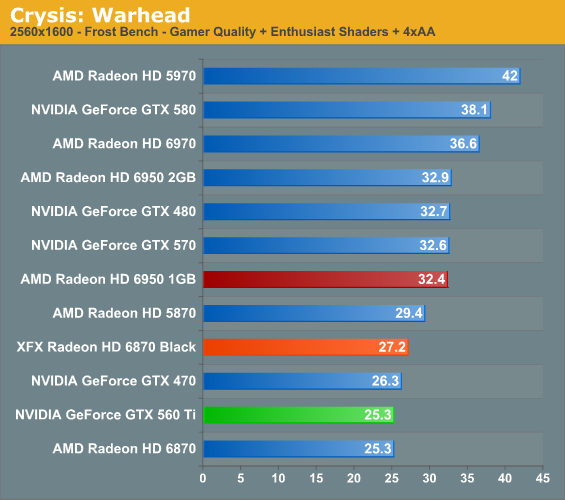
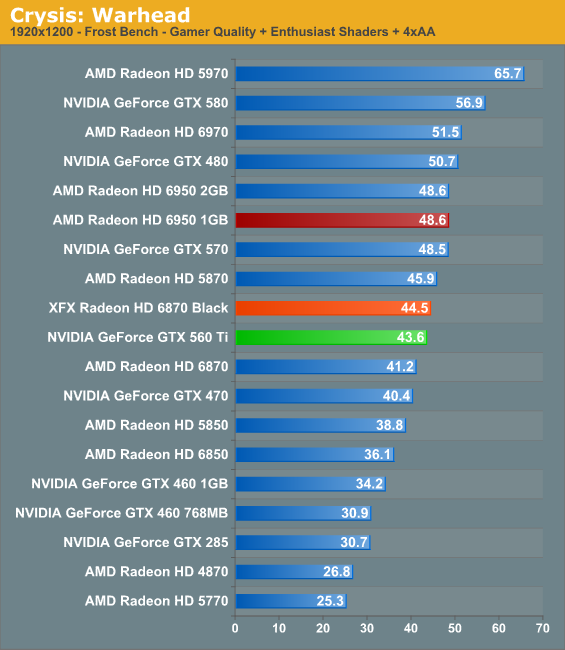
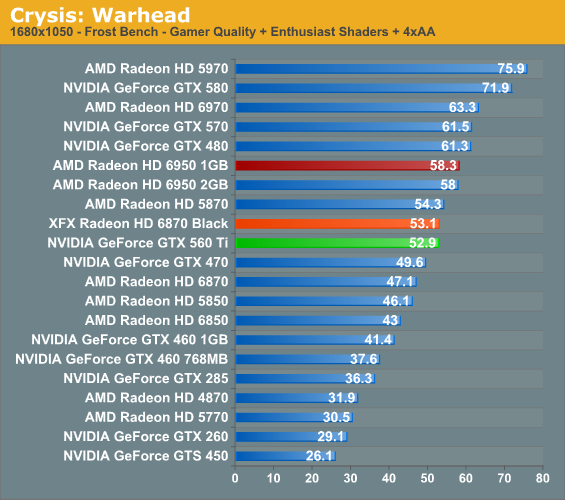
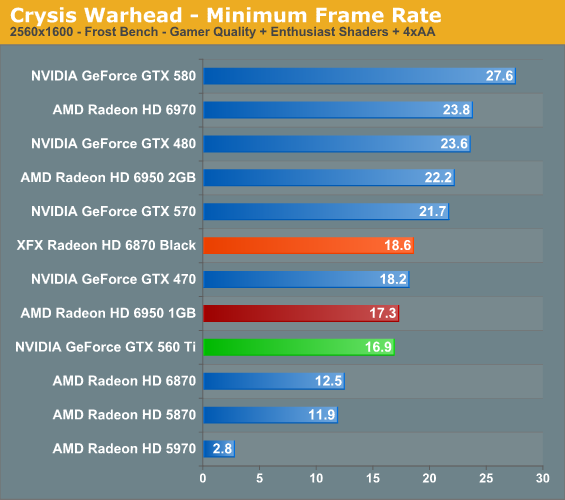
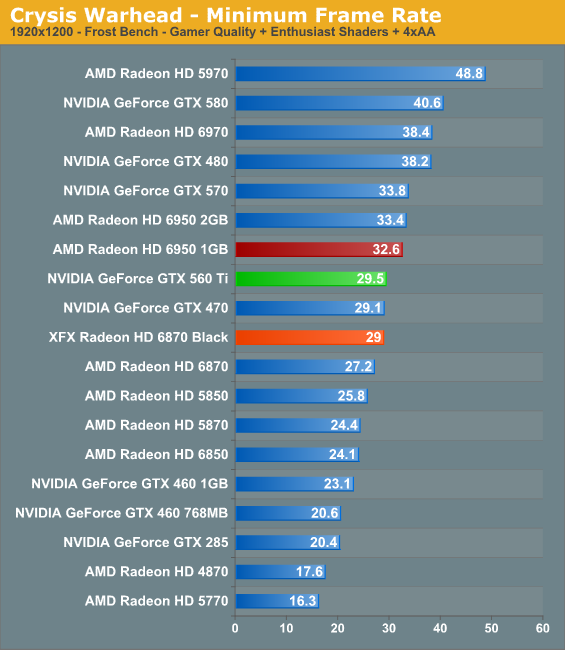
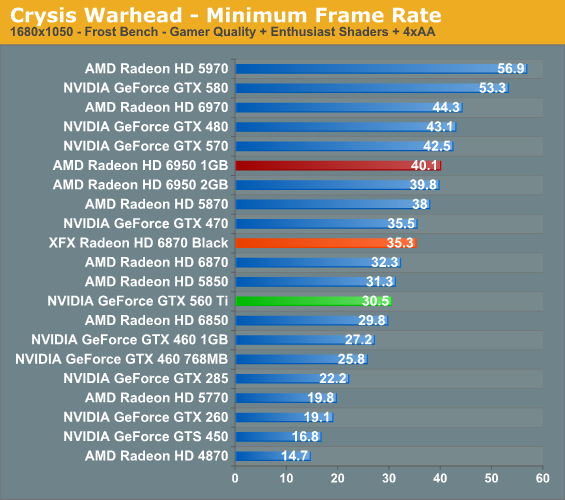

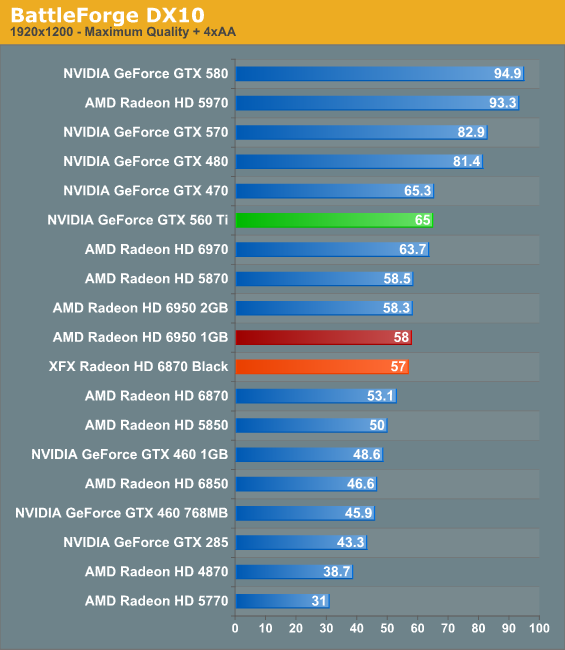
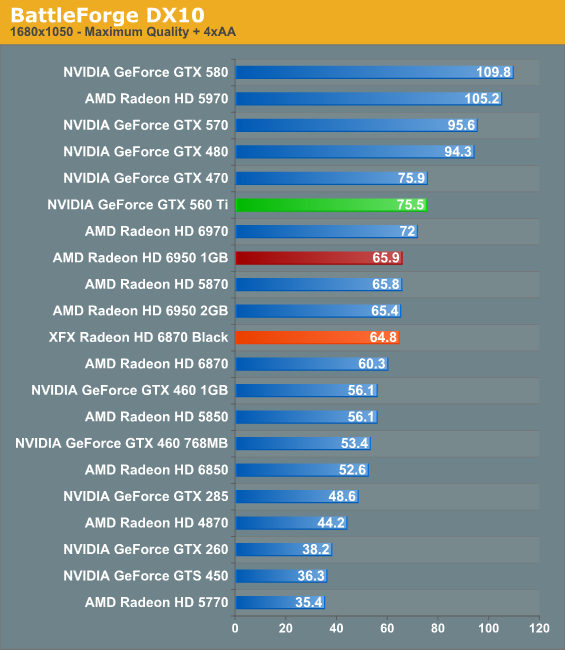

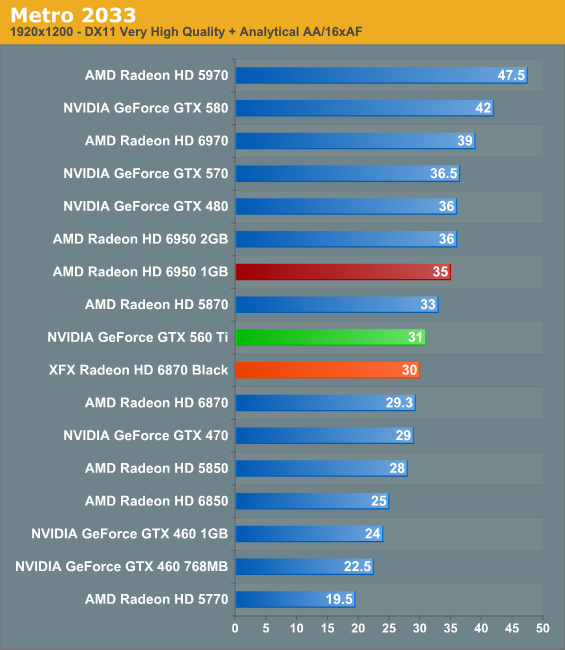
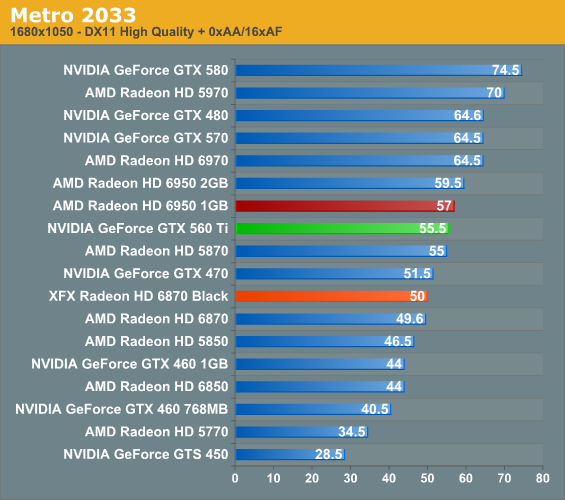
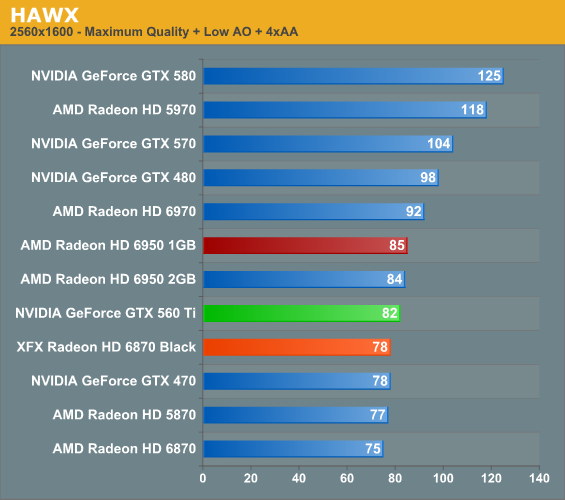
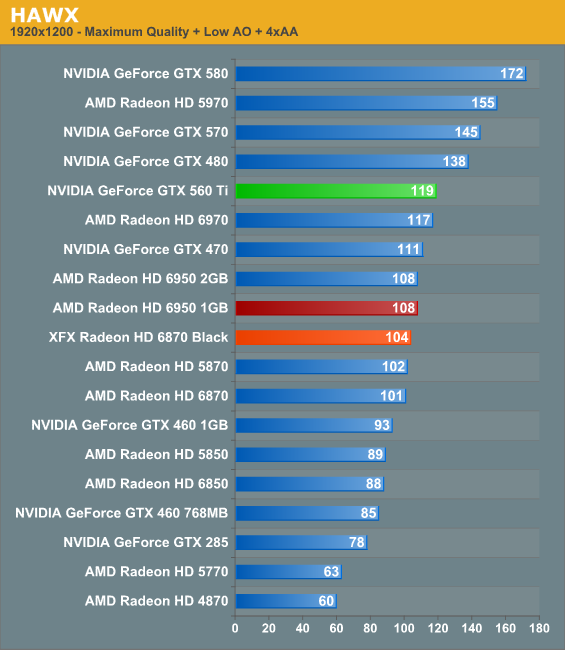
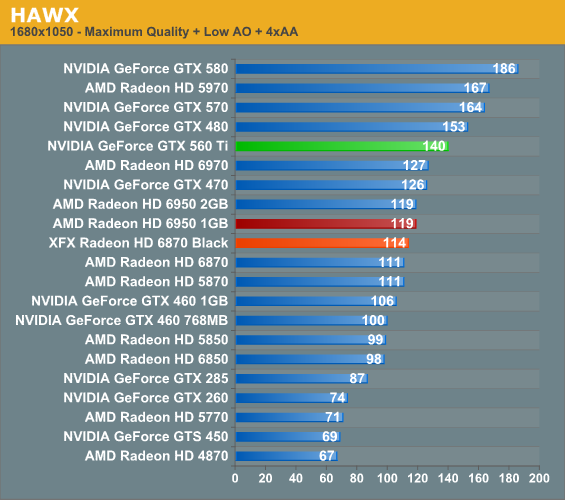
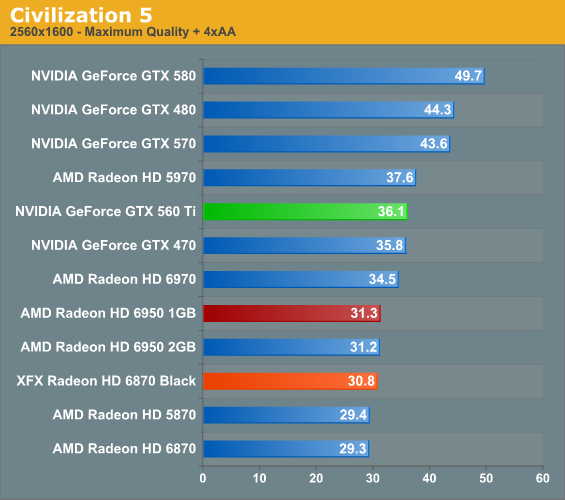
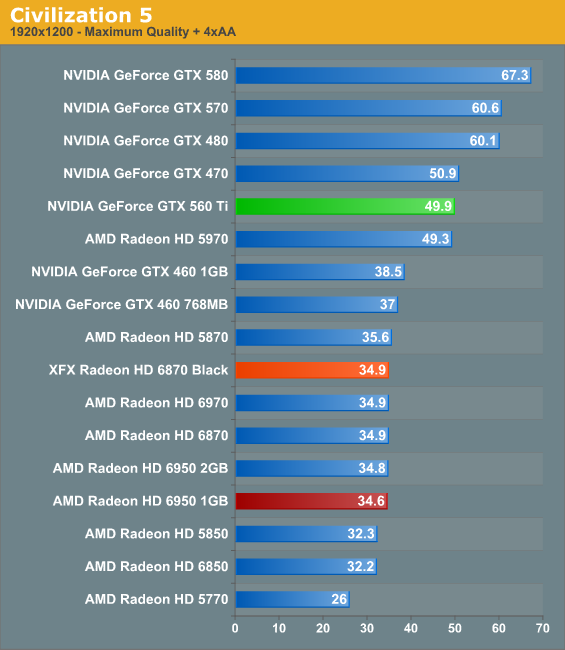
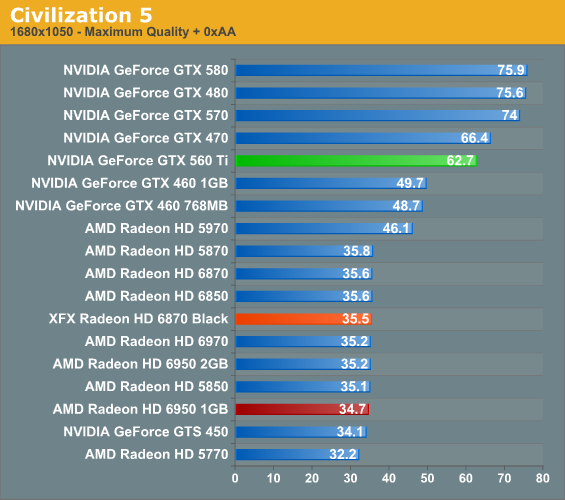
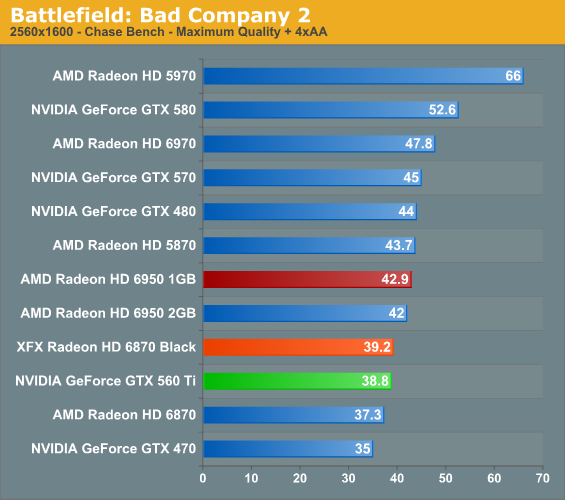
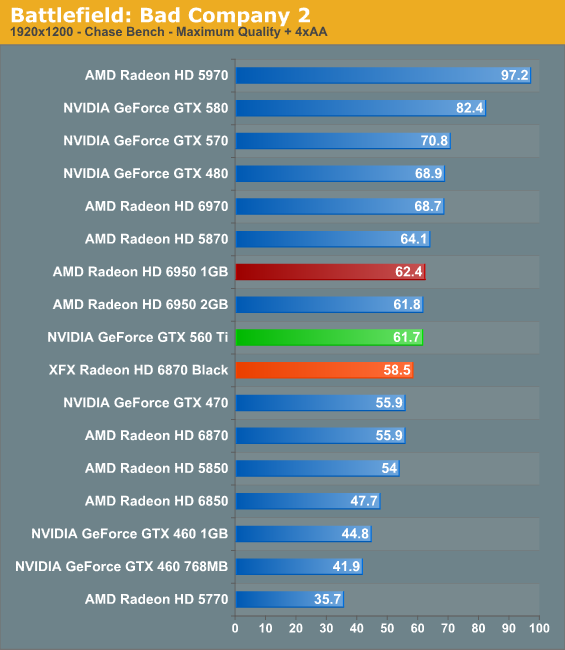
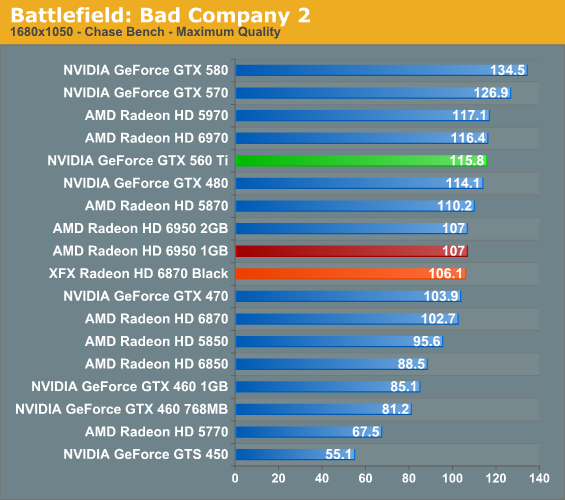
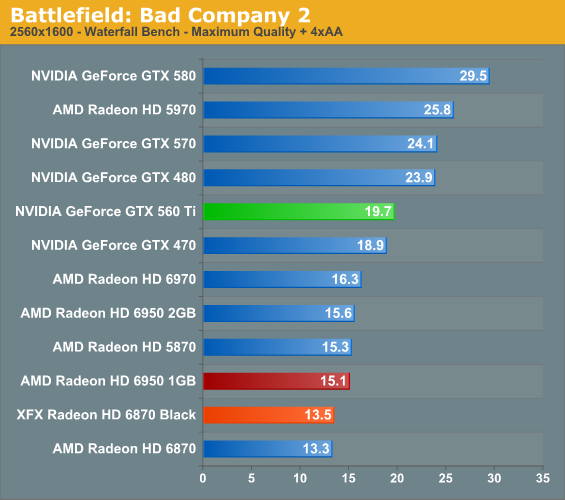

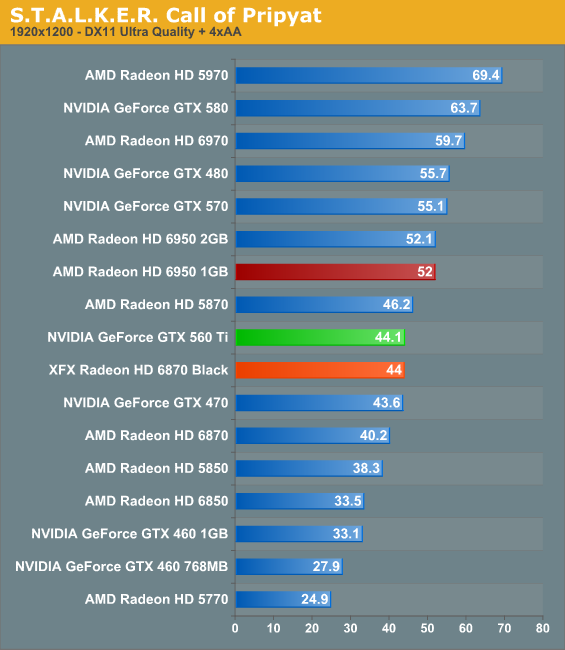
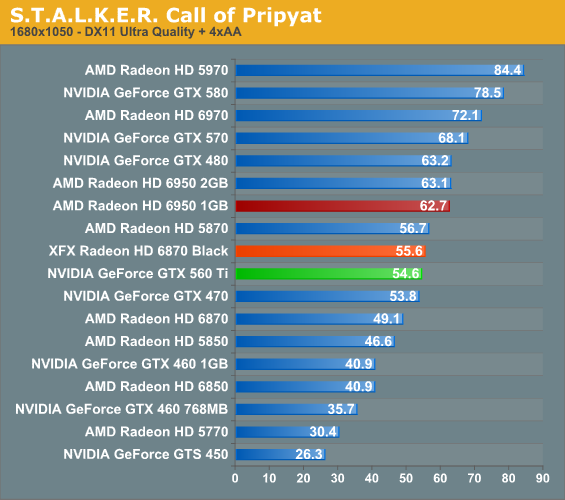
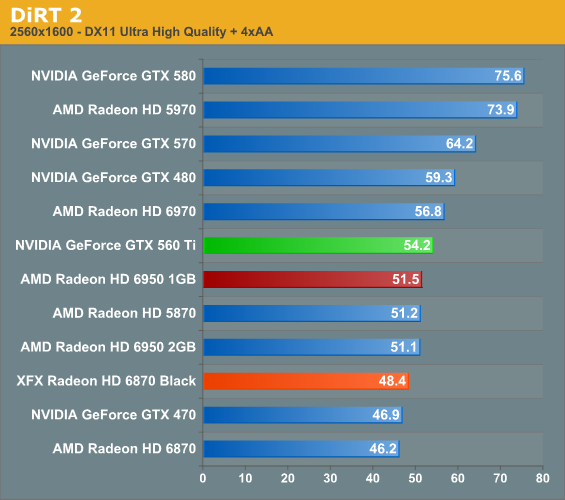
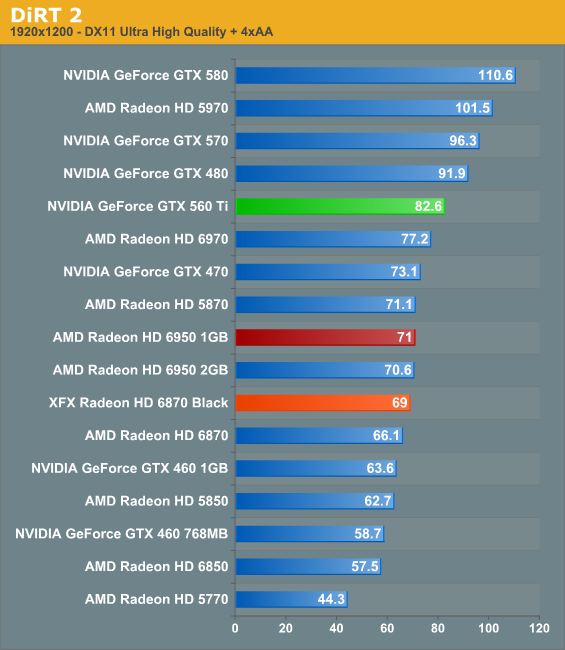

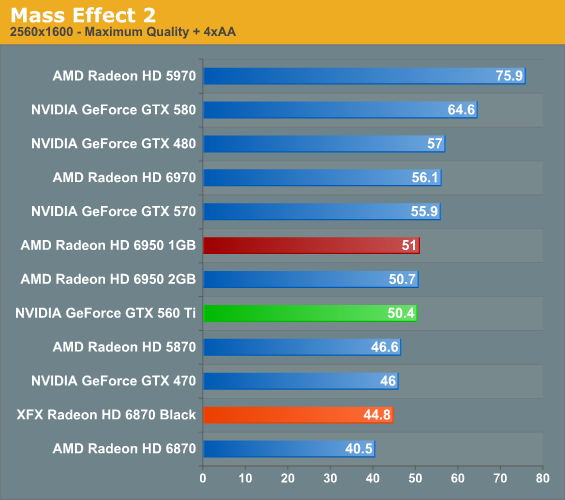
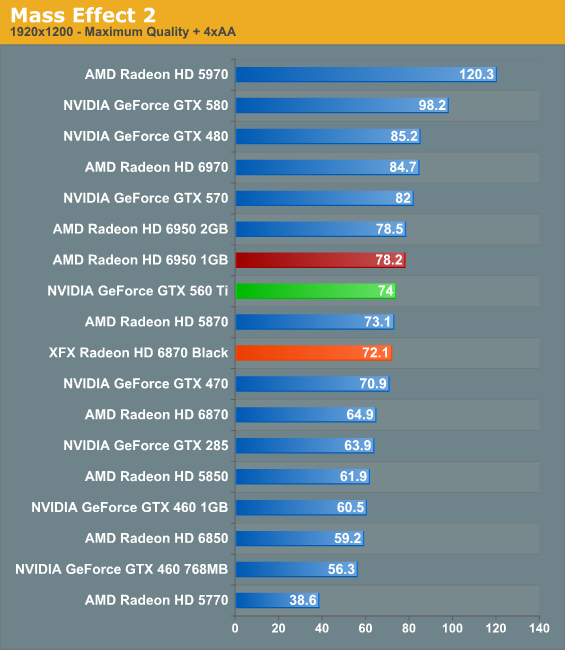
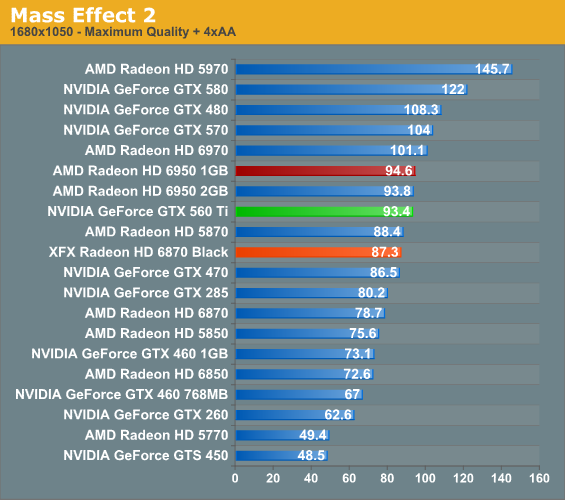




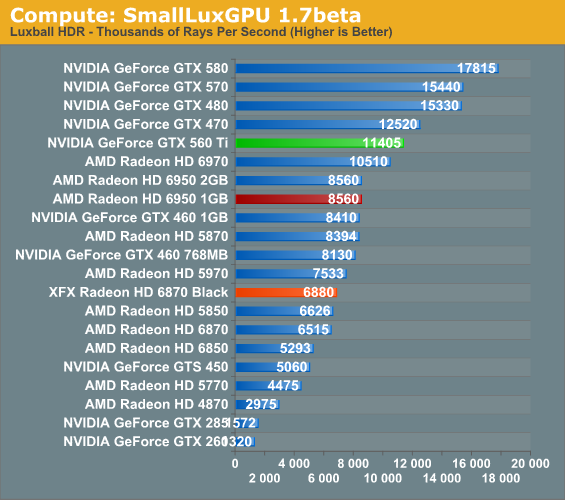










111 Comments
View All Comments
rdriskill - Tuesday, January 25, 2011 - link
Given that it is a lot easier to find a 1920 x 1080 monitor now than it is to find a 1920 x 1200 monitor, would that resolution make more sense to list in these kinds of comparisions? I realise it wouldn't make much of a difference, but it is kind of strange to not see what, at least in my area, is the most common native resolution.james.jwb - Tuesday, January 25, 2011 - link
wouldn't mind seeing 27" res include at the high end (2560x1440) as up there pushes the cards much harder and could make all the difference between playable and unplayable. I realize this is more work though :)Ryan Smith - Tuesday, January 25, 2011 - link
As 16:9 monitors have 90% of the resolution of 16:10 monitors, the performance is very similar. We may very well have to switch from 19x12 to 19x10 because 19x12 monitors are becoming so rare, but there's not a lot of benefit in running both resolutions.The same goes for 25x14 vs. 25x16. Though in that case, 25x16 monitors aren't going anywhere.
Makaveli - Tuesday, January 25, 2011 - link
Great review.As for the complaints GTFO, is it somehow affecting your manhood that there is an overclocked card in the review?
Some of you really need to get a life!
ctbaars - Tuesday, January 25, 2011 - link
Hey! Don't you talk to Becky that way ....silverblue - Tuesday, January 25, 2011 - link
It's overclocked, sure, but it's an official AMD product line. If AMD had named it the 6880, I don't think anyone would've questioned it really.Shadowmaster625 - Tuesday, January 25, 2011 - link
The 6870 has 56 texture units and the 6950 has 88 , or 57% more. Yet if you add up all the scores of each you find that the 6950 is only 8% faster on average. This implies a wasted 45% increase in SPs and/or texture units (which one?), as well as about 800 million wasted transistors. Clearly AMD needed to add more ROPs to the 6950. Also, since the memory clock is faster on the 6950, this implies even more wasted transistors. If both cards had the same exact memory bandwidth, they might very well only be 4% apart in performance! AMD's gpu clearly responds much more favorably to an increase in memory bandwidth than it does to increased texture units. It really looks like they're going off the wheels and into the weeds. What they need is to increase memory bandwidth to 216G/s, and increase their ROP-to-SIMD ratio to around 2:1.Yes I know about VLIW4... but where is the performance? Improvements should be seen by now. Like what Nvidia did with Civ 5. I'm not seeing anything like that from AMD and we should have been seeing that by now, in spades.
B3an - Wednesday, January 26, 2011 - link
....I like how you've completely missed out the fact that the 6870 is clocked 100MHz higher on the core, and the 6870 Black is 140MHz higher. You list all these other factors, and memory speeds, but dont even mention or realise that the 6870/Black have considerably higher core clocks than the 6950.Shadowmaster625 - Wednesday, January 26, 2011 - link
It is probably clocked higher because it has almost a billion fewer transistors. Which begs the question.... what the hell are all those extra transistors there for if they do not improve performance?DarkHeretic - Tuesday, January 25, 2011 - link
This is my first post, i've been reading Anand for at least a year, and this concerned me enough to actually create a user and post."For NVIDIA cards all tests were done with default driver settings unless otherwise noted. As for AMD cards, we are disabling their new AMD Optimized tessellation setting in favor of using application settings (note that this doesn’t actually have a performance impact at this time), everything else is default unless otherwise noted."
While i read your concerns about where to draw the line on driver optimisation Ryan, i disagree with your choice to disable select features from one set of drivers to the next. How many PC users play around with these settings apart from the enthusiasts among us striving for extra performance or quality?
Surely it would make be far fairer for testing to leave drivers at default settings when benchmarking hardware and / or new sets of drivers? Essentially driver profiles have been tweaking performance for a while now from both AMD and Nvidia, so where to draw the line on altering the testing methodology in "tweaking drivers" to suit?
I'll admit, regardless of whether disabling a feature makes a difference to the results or not, it actually made me stop reading the rest of the review as from my own stance the results have been skewed. No two sets of drivers from AMD or Nvidia will ever be equal (i hope), however deliberately disabling features meant for the benefit of the end users, just seems completely the wrong direction to take.
As you are concerned about where AMD is taking their driver features in this instance, equally i find myself concerned about where you are taking your testing methodology.
I hope you can understand my concerns on this and leave drivers as intended in the future to allow a more neutral review.
Regards